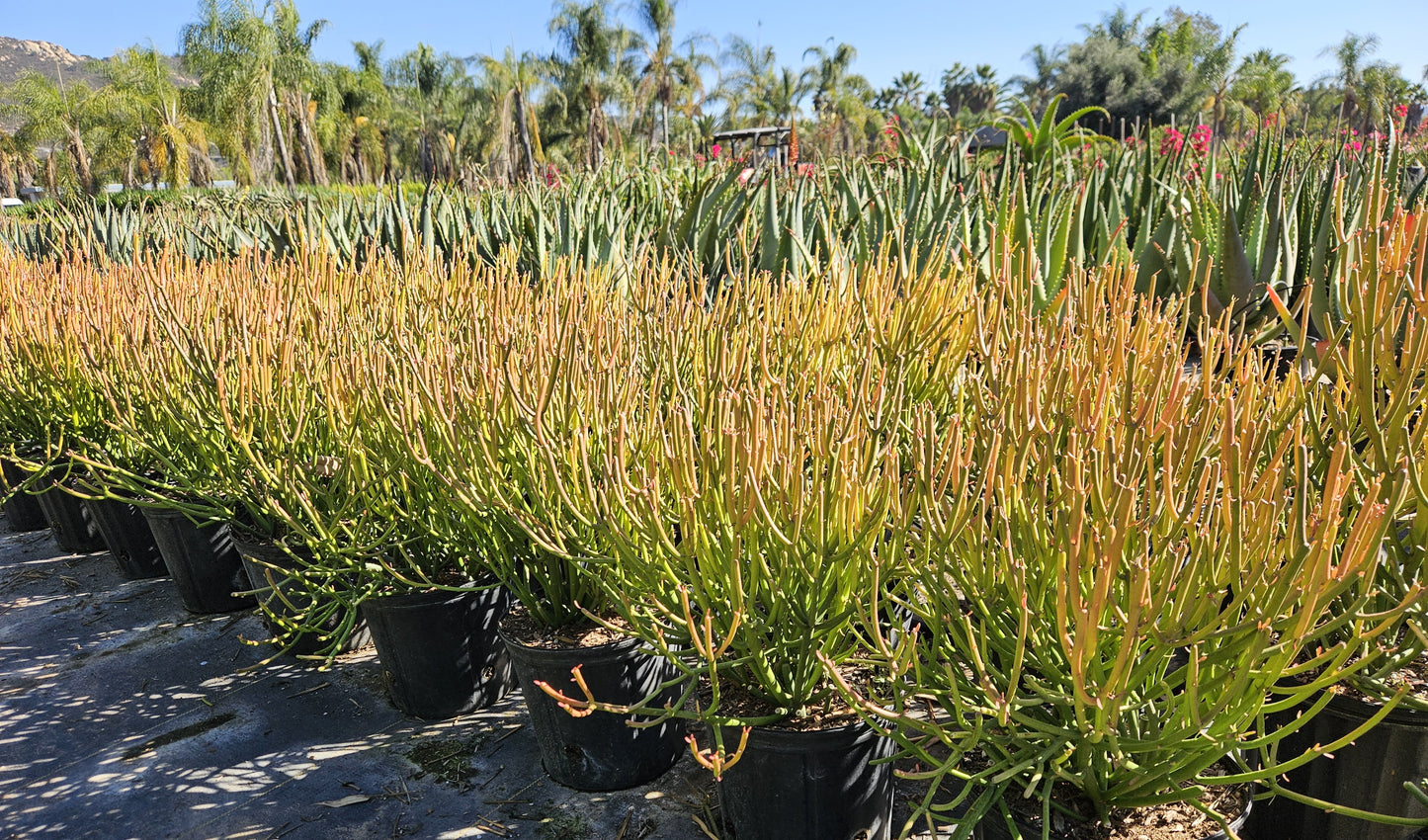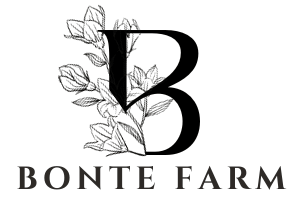Bonte Farm
Euphorbia t 'Stick on Fire': Redbird Flower Succulent
Euphorbia t 'Stick on Fire': Redbird Flower Succulent
Couldn't load pickup availability
Euphorbia t 'Stick on Fire': A Fiery Addition to Your Garden
Euphorbia tithymaloides 'Stick on Fire', also known as the Redbird Flower or Slipper Flower, is a striking succulent shrub admired for its vibrant, variegated foliage and unique flower bracts. This easy-to-grow plant brings a touch of the tropics to any landscape with its fiery display of red, pink, and green hues.
Year-Round Fiery Foliage
- Variegated Leaves: Showcases eye-catching, lance-shaped leaves with a mix of red, pink, cream, and green. The intensity of the red and pink colors intensifies in cooler weather and brighter sunlight.
- Unique Flower Bracts: Produces small, inconspicuous true flowers surrounded by showy, slipper-shaped bracts in shades of bright red, resembling tiny birds or shoes. These bracts appear intermittently throughout the year, adding to the plant's visual appeal.
Botanical Characteristics:
- Scientific Name: Euphorbia tithymaloides 'Stick on Fire'
- Common Names: Redbird Flower, Slipper Flower, Devil's Backbone, Jacob's Ladder
- Growth Habit: Upright, multi-stemmed succulent shrub with a somewhat zig-zagging growth pattern.
- Foliage: Variegated, lance-shaped leaves with red, pink, cream, and green coloration.
- Mature Size: Typically reaches 2-4 feet (0.6-1.2 meters) tall and 1-3 feet (0.3-0.9 meters) wide.
USDA Hardiness Zones: 9-11. Best suited for warm climates with minimal frost. Can be grown as a container plant in colder regions and brought indoors during winter.
Cultivation and Care:
- Sunlight: Thrives in full sun (at least 6 hours per day) for the most vibrant foliage color. Can tolerate some light shade, but the colors may be less intense.
- Soil: Requires well-draining soil. Like most succulents, 'Stick on Fire' is susceptible to root rot in soggy conditions. A cactus or succulent potting mix is ideal.
- Water: Drought-tolerant once established. Water thoroughly when the soil is dry to the touch, and allow the soil to dry out completely between waterings. Avoid overwatering, especially during winter.
- Fertilizer: Generally does not require heavy fertilization. A diluted balanced liquid fertilizer can be applied sparingly during the growing season (spring and summer).
- Temperature: Prefers warm temperatures and is sensitive to frost. Protect from freezing temperatures.
Landscape Use:
- Specimen Plant: Use as a vibrant focal point in gardens, borders, and rock gardens.
- Container Plant: Excellent for container gardening on patios, balconies, and decks. Its striking foliage adds a splash of color to any outdoor space.
- Mass Planting: Can be mass planted for a dramatic effect, creating a colorful groundcover.
- Mixed Borders: Adds interesting texture and color contrast when planted alongside other succulents, cacti, and drought-tolerant plants.
Wildlife Attraction:
- Pollinators: The flowers attract butterflies, bees, and other pollinators, contributing to garden biodiversity.
Pest and Disease Resistance:
Generally resistant to most pests and diseases when grown in well-draining conditions. Overwatering and poor drainage can lead to root rot. Mealybugs and scale insects may occasionally be a problem, but they can be controlled with insecticidal soap or horticultural oil.
Propagation:
Easily propagated by stem cuttings. Allow the cut ends to callus over for a few days before planting them in well-draining soil. Cuttings root readily in warm weather.
Incorporating Euphorbia tithymaloides 'Stick on Fire' into Your Landscape:
When designing your landscape, consider the following tips:
- Placement: Choose a sunny location with well-draining soil.
- Companion Plants: Pair with other drought-tolerant plants like sedums, agaves, and cacti for a water-wise garden.
- Container Gardening: Use containers with drainage holes to prevent waterlogging.
- Winter Protection: In colder climates, bring container plants indoors or provide protection from frost.
Relevant Keywords: Euphorbia tithymaloides 'Stick on Fire', Redbird Flower, Slipper Flower, Devil's Backbone, Jacob's Ladder, variegated foliage, succulent shrub, drought-tolerant plant, container gardening, USDA zone 9, USDA zone 10, USDA zone 11, low-maintenance plant, red flowers, pink flowers, tropical plant, butterfly garden, pollinator plant, stem cuttings, propagation.
Share




